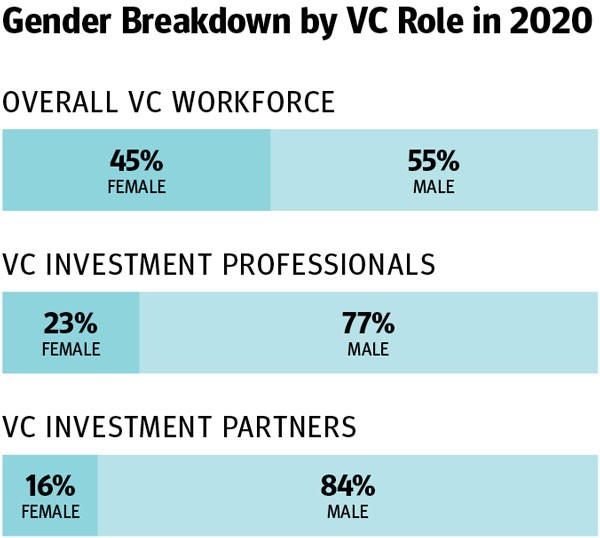Lifting Others
Lauren Blodgett '11 started a nonprofit that's empowering young immigrant women.

Photo: Hadi Yazsani
Investment Opportunities
Meagan Loyst CSOM '19 is opening doors for a new generation of venture capitalists.
Early in the pandemic, Meagan Loyst CSOM ’19 was living at her parents’ house on Long Island and working remotely for one of the country’s leading venture capital funds. She had joined the firm in September 2020, becoming its youngest investor. Hoping to connect with other young people in the field, she sent out a tweet that fall that would change her life, shake up her industry, and ultimately land her on the 2022 Forbes “30 Under 30” list.
Venture capital funds are often the first major investors in startup companies, providing vital financing as fledgling businesses grow past their early stages of development. For example, in 2016, Lerer Hippeau, the fund where Loyst works, led a group that invested $2.7 million into the sustainable footwear company Allbirds. Six years later, Allbirds is worth a reported $709 million. Loyst refers to venture capitalism as the “lifeblood of entrepreneurship.” But she also believes the industry should do more to diversify its workforce. According to a 2021 survey by the professional-services firm Deloitte, just 7 percent of VC workers were Hispanic or Latino in 2020, and only 4 percent were Black. The survey also highlighted gender disparity in the field. Women held 45 percent of all positions in the VC workforce in 2020—the same as in 2018 and 2016—but when it came to senior-level roles, women accounted for just 23 percent of investment professionals and 16 percent of partners at firms.
Hoping to connect with other VCs who shared her life experiences, Loyst sent out a tweet one day to fellow Gen Z investors—those born in 1995 or later. She asked them to respond with the companies and trends they were interested in. The article that Loyst wrote for her Medium page summarizing these responses ended up going viral, and she decided to capitalize on the momentum in the fall of 2020 by creating a new online community called Gen Z VCs. Inspired by the level of interest in the group, Loyst then organized the Gen Z VCs Summit. The day-long virtual event in September 2021, which featured presentations by founders and companies looking to target the generation, attracted 3,000 attendees from 71 countries, most of them Gen Z investors and students.
Diversity is critical in venture capital, Loyst said, because employing VCs with different backgrounds leads to better investment decisions.
Prior to the summit, Gen Z VCs caught the attention of the national media, and Loyst was the subject of coverage in such outlets as Cosmopolitan, the Washington Post, and Bloomberg Television. Business Insider even dubbed her the “Queen of Gen Z VCs.” Meanwhile, Loyst’s Twitter account exploded from 50 followers to more than 20,000. Gen Z VCs is now a collective of more than 12,000 young people interested in venture capitalism, investing, and startups. It offers a number of initiatives for its members, including a peer mentorship program that assisted 228 mentees in its inaugural year—41 percent of them people of color.
Diversity is critical in venture capital, Loyst said, because employing VCs with different backgrounds leads to better investment decisions. “If you just have white guys on one side of the table, you’ll oftentimes miss out on opportunities because it’s hard for you to see those other perspectives,” she said. To ensure future diversity, there should be a “culture of listening” in VC, she added, especially around the hiring and mentoring of young people. Lacking connections when she started out in the field after graduating from Boston College, Loyst had to create her own opportunities. When she noticed that Lerer Hippeau employed an unusually high number of women, she sent a cold email to the firm introducing herself. The message led to Loyst getting coffee with partner Andrea Hippeau and later a job. Today she’s an associate at the firm, and much of her time is spent talking to company founders, many of whom she finds on social media. “They’re telling me about their life story,” she said, “why their idea is going to change the world, how they’re doing it.”

Data source for graph: “VC Human Capital Survey,” March 2021, Deloitte
Loyst and her colleagues research companies for potential investment, and examine their market size, competition, and financial and business model. If the team sees potential, Lerer Hippeau’s partners will get involved for further analysis. Like all VC firms, Lerer Hippeau receives partial ownership of any company it invests in, while also helping the company with marketing, branding, strategy, and public relations. Loyst is particularly bullish these days on what she calls the creator economy, meaning people and businesses that produce online content. “People look up to creators the same way that I think a decade ago people looked up to athletes and celebrities,” she said. “People are admiring creators, they’re buying products from creators, and the barriers to creation have never been lower because of TikTok.”
Loyst was first drawn to VC because of the opportunity it presented to impact the world through life-changing startups. Now, as she builds her own career, she wants to give others the tools for success via Gen ZVCs. “VC still has a long way to go in terms of seeing true parity,” she said. “But I think having open hiring practices and younger people getting into venture earlier with different sets of experiences is moving the needle quite a bit.” 